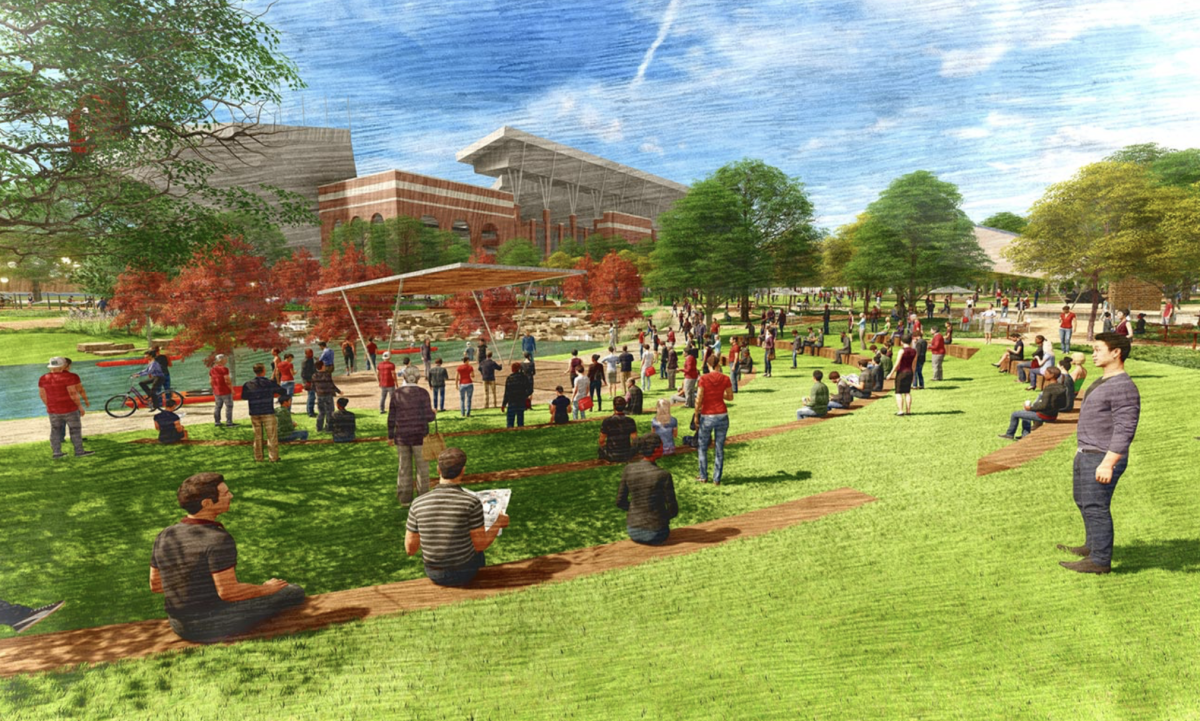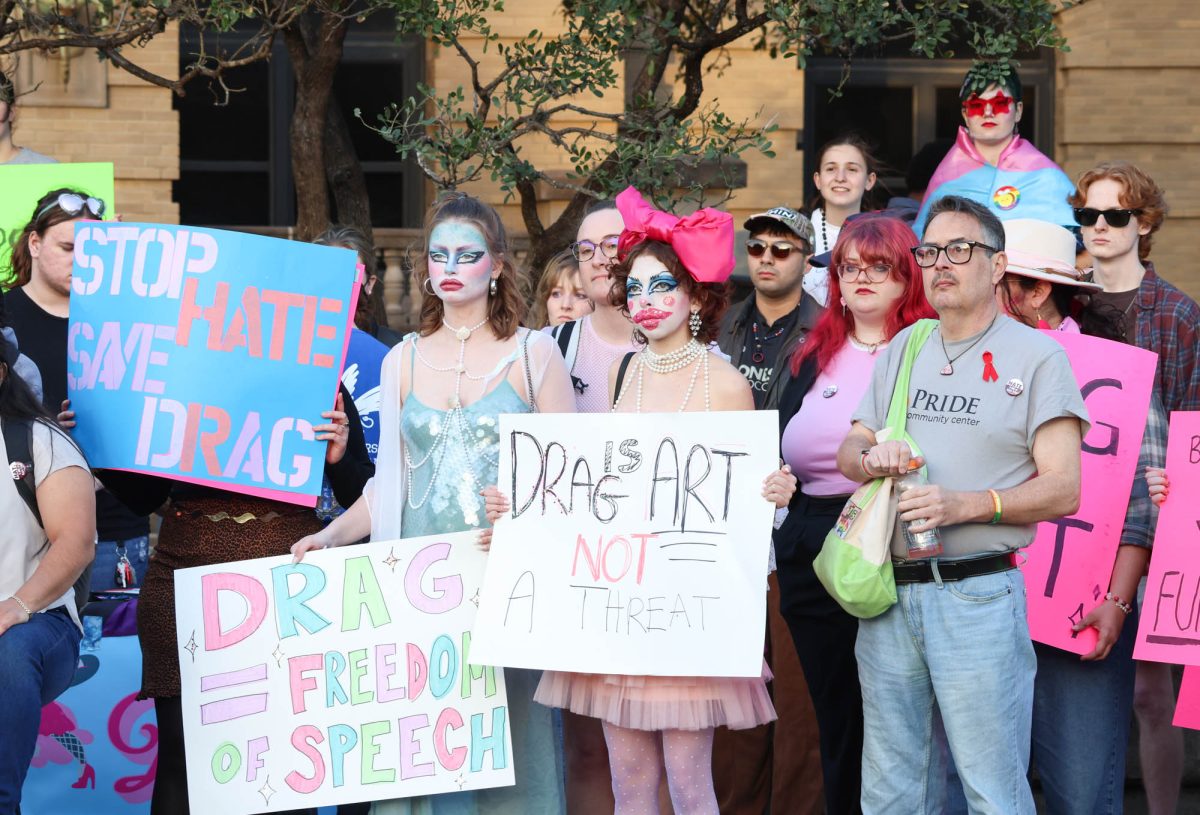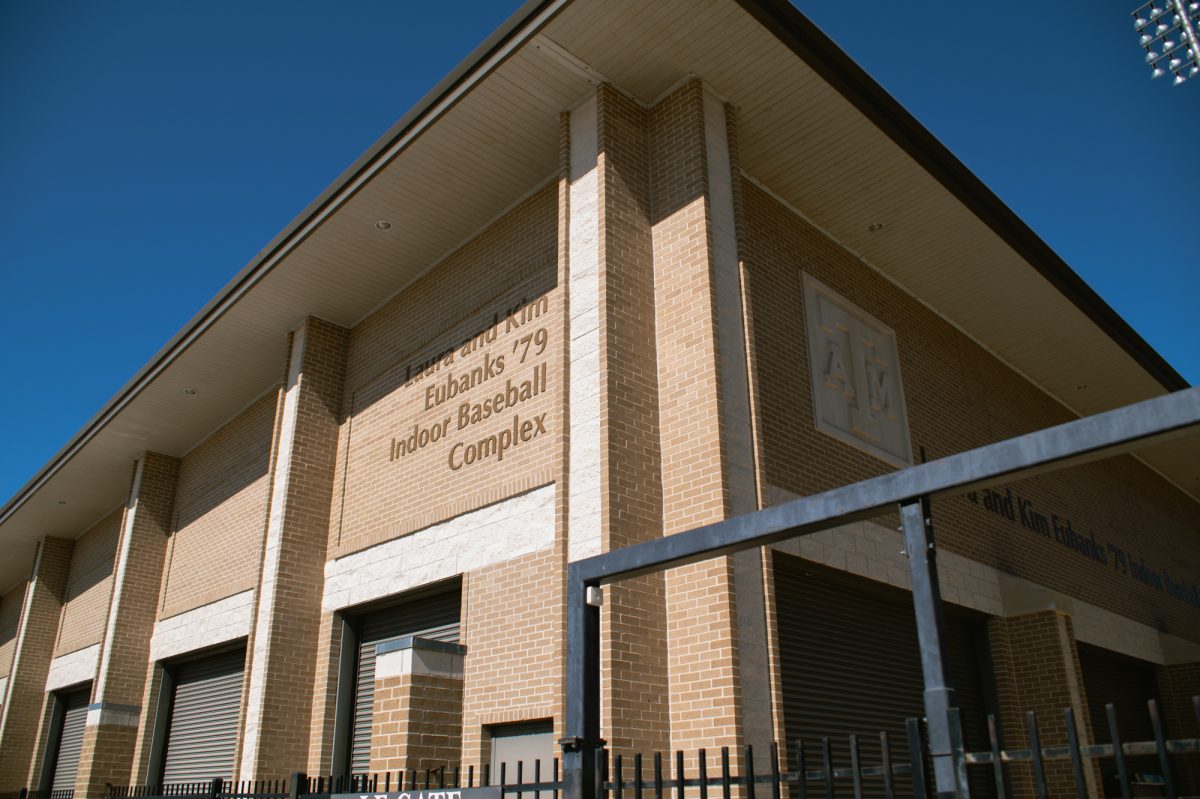Aggie Park is one of the most anticipated campus beautification projects of the year. The park is set to provide an outdoor amphitheater, green spaces and tailgating areas for Texas A&M’s campus. However, the Native Plant Society of Texas argues the park will bring damaging effects to the environment.
Members of the Native Plant Society of Texas said recent decisions have not taken into account the damage Aggie Park may cause to the native environment. Over 100 invasive trees are set to be planted in the park during the upcoming year. The Chinese elm, or lacebark elm, is a non-native species which is invasive to eastern and southern regions of the U.S.
Linda Knowles, Class of 1979 and president of the Native Plant Society of Texas, or NPSOT, said she first became aware of the issue through a former student newsletter. Since then, Knowles said she has addressed the issue with the coordinators of the park but has not received a direct reply regarding the possible dangerous effects to the environment.
“I thought, ‘This just doesn’t seem right to me.’ So, I contacted [Marty Holmes] and he just said, ‘Well, they’re going to be beautiful,’” Knowles said. “He sent me a message that pretty much ignored my concerns.”
Being a former student, Knowles said she’s disappointed in the actions the university has taken during the project to beautify campus.
“I’m kind of embarrassed about Texas A&M,” Knowles said. “I can see that there’s a lot more knowledge at other [universities]. A&M has a kind of blind eye to how invasive something really is.”
Similarly, other members of the NPSOT have reached out to project coordinators but have not received a response. Rachel Cywinski, member of NPSOT, said this calls into question A&M’s credibility, including being the host of the Texas Forest Service, an agency who addresses forest issues in Texas.
“A&M is not using the science the Forest Service has developed. This is planting invasive species on public land; this is anti-science,” Cywinski said. “We expect better from Texas A&M, because I think of it as being a university that should support science.”
Cywinski said Aggie Park coordinators have justified planting these trees by claiming Chinese elms are already found on campus.
“Even if you have invasive species on your land, as a public institution, you have a moral obligation to remove them,” Cywinski said. “This is the place where native pollinators and the native wildlife can live. Now, it is decreasing because humans are bulldozing the plants and building houses, and that’s just the reality.”
Additionally, Cywinski said because Chinese elms are not native to the Brazos Valley, they bring no benefit to the community and the wildlife living here.
“You’re taking space that originally belonged to what was there before and using it for something that’s detrimental and has no wildlife value,” Cywinski said.
However, Vice President of Communication for the Association of Former Students Scot Walker said the Association did not go about tree selection haphazardly. The park will include a total of 700 trees, 84-85% of them being Texas natives and 14% of them being Chinese elms developed at the University of Georgia, which “will easily support the local wildlife,” Walker said.
“There was a lot of time and expertise that went into putting this plan together,” Walker said. “It’s an approved tree by the state of Texas. It’s an approved tree by the city of College Station. It is not an invasive tree in Texas.”
Additionally, Walker said the Chinese elm is beneficial to the park as it is suitable for the ever changing climate in College Station.
“It’s winter hardy, so if we have a bad winter storm like we’ve had the past couple of years, it’ll survive those no problem,” Walker said. “It’s very resistant to Dutch elm disease, which is a serious problem with most elm trees; it’s all around just a great tree.”
Yet, Cywinski said it’s disheartening to see an institution like A&M make decisions that harm the environment, especially when it jeopardizes the future of students as well.
“To think that something was there that shouldn’t have been planted to begin with and use it as an excuse to possibly affect every student who goes on that campus for the next 100 years,” Cywinski said. “We expect better from our public institutions, and especially one we hope makes decisions based on scientific fact. We hope for better.”










